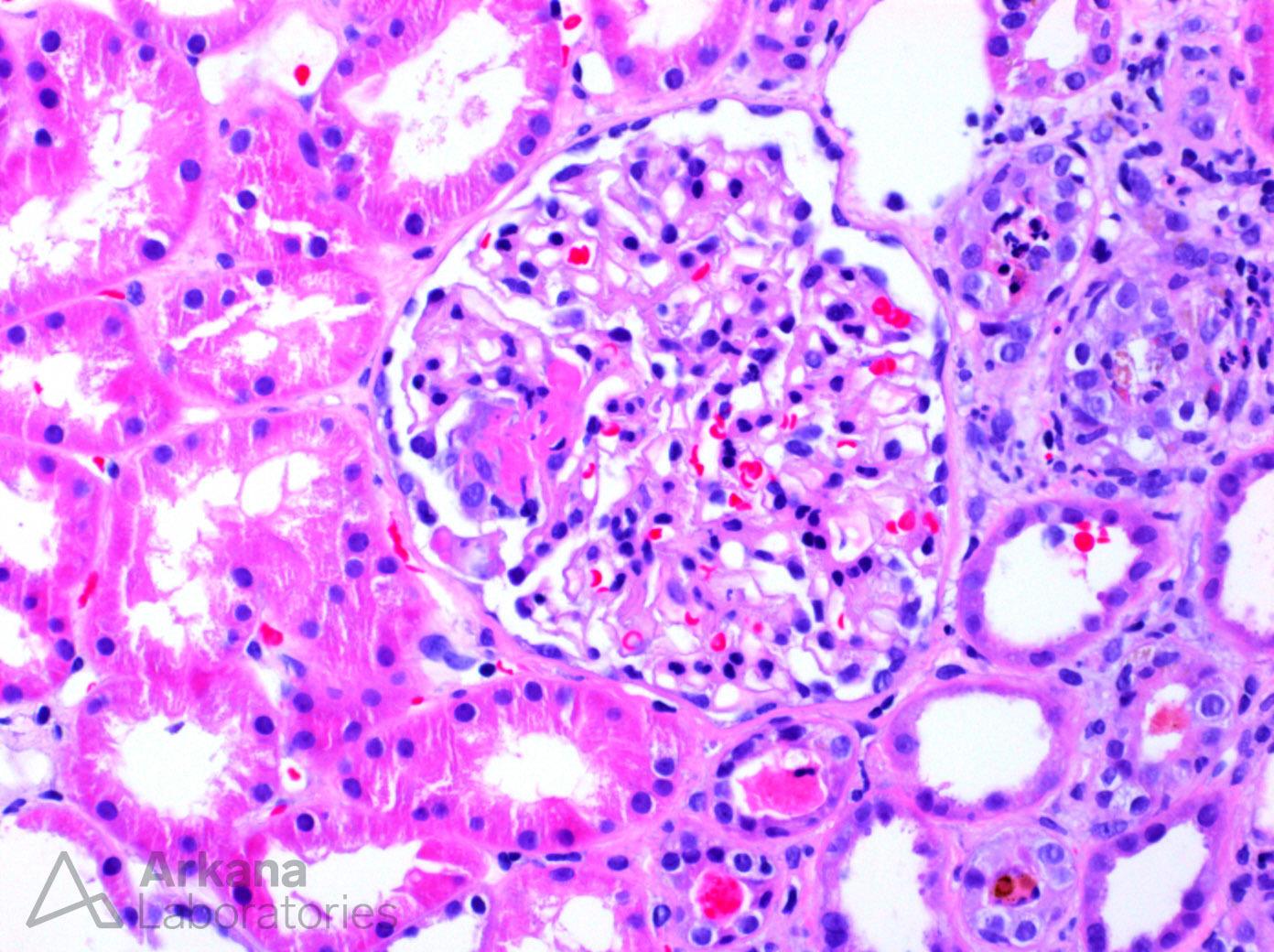What is your presumed diagnosis in the absence of immunofluorescence and electron microscopy?
The photomicrograph shows a glomerulus with segmental fibrinoid necrosis. The differential diagnosis for this lesion is broad and includes anti-GBM nephritis, ANCA-mediated vasculitis, and immune-complex mediated etiologies. The absence of endocapillary proliferation and immune complex deposits visualized within the mesangium or capillary loops on light microscopy would be unusual for an immune-complex mediated etiology. Additionally, anti-GBM nephritis typically shows diffuse and often global necrosis and crescent formation with frequent disruption of Bowman’s capsule which is absent here. From these observations, the most likely etiology is ANCA-mediated vasculitis which is correct as the immunofluorescence was completely negative, electron microscopy showed no immune complex type deposits, and the patient had a positive MPO-ANCA serology.
Quick note: This post is to be used for informational purposes only and does not constitute medical or health advice. Each person should consult their own doctor with respect to matters referenced. Arkana Laboratories assumes no liability for actions taken in reliance upon the information contained herein.

